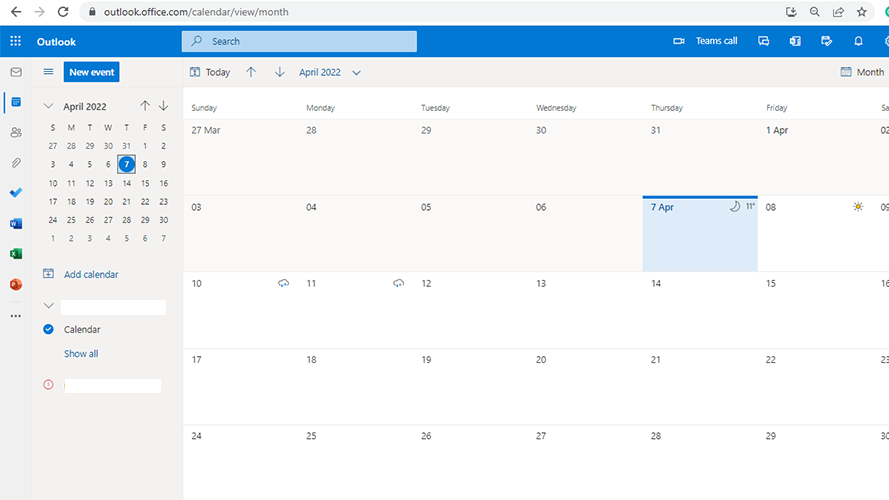
There is a lot of discussion these days about the pros and cons of post-processing. Is it good or bad, why do we do it at all, shouldn’t photography be representative of reality? Authentic? Isn’t the image out of a camera the real thing? Isn’t editing cheating?
What is an Unedited Digital Photo?
Let’s put one thing to bed immediately. There is no such thing as an unedited image.
Here’s why:
When you press the shutter release button on your camera, the shutter moves out of the way and allows light to fall on the sensor. Once the exposure is complete, the shutter falls back into place. The image processor in your camera then takes all the light data from the sensor and puts it into a RAW file. This happens, whether or not you’ve chosen to shoot in RAW or jpg (assuming your camera gives you the choice).
If you’ve chosen to shoot in jpg, the image processor then takes this RAW file and tries to make sense of it, based on the algorithms (and perhaps artificial intelligence) in the camera. It applies contrast, saturation, noise reduction, some sharpening, etc, and then saves the result as a jpg image.
If you chose to shoot in RAW, it just saves the RAW file. In this case, you will apply contrast, saturation, noise reduction, and so on, as per your intent, later on.
In both cases, the image has been edited. In the case of shooting in jpg, the camera has made the edits, and in the case of shooting in RAW, a human has.
There is no such thing as an unedited image.
Some people argue that if you converted the RAW image to jpg, without any edits, that would be an unedited image. This is hogwash. First of all, a RAW file isn’t a usable image format. Try inserting one into your Word document, or importing one into InDesign, if you doubt this. You need specialized software (Lightroom, Camera RAW, etc) to export a RAW file to an image file.
If you look at a JPEG preview made from an unedited RAW file, you will see that it is flat, has washed out colors, and has little to no detail in the highlights and shadows. It is not what the scene looked like. A RAW file is not an image, it is a database of light information and is intended to be edited before exporting as an image.
Consider below:
![]()
![]()
The left image is the JPEG export of an unedited RAW file. There’s no depth in the color, hardly any detail in highlights or shadows. The middle is the JPEG file exported by the camera. The right is a JPEG export of the RAW file, edited by me. The last image is the closest, of the three, to what the scene looked like.
So there is no such thing as an unedited image. And no, editing is not cheating. It can be overdone, it can be poorly done, it can be distastefully done, but is has to be done. How much is acceptable, is what we’ll talk about now.
How Much Editing is Too Much? And Does It Matter?
Broadly speaking, I feel it depends on your intent, on the end-use of the photos. Let’s jump right in, and ask ourselves these questions in various fields of photography.
Personal / Fine Art Photography
If you are shooting for yourself, or are a fine art photographer, then it is entirely up to you. The edits can be as subtle or strong as you like and the saturation can be intense or not — it’s your call. You know how you want your work to look. Some people like HDR, some like realism or accuracy to the scene as it was, and some like adding effects or layering/compositing. It’s art, it’s your call, go nuts! Edit and manipulate to your heart’s content.
Consider the beautiful work of Henry Friedland. These intricate compositions have their roots as photographs. They are combinations of various images, that have been intertwined and manipulated with textures, effects, and overlays. They are so extensively edited that they have moved on from being photographs to becoming stunning works of digital art.
So, if you’re a fine art photographer, it doesn’t matter at all, how much, or little editing you do.
Photojournalism
This is the other extreme. The purpose of photojournalism is to show (or document) the reality of a place/situation/event to people who aren’t/weren’t physically present. The aim is to be as accurate as possible, so your editing needs to be aligned with reality. What were the colors like, and what was the light like? In all likelihood, you’re unlikely to be doing more than basic color, contrast, sharpness, and noise adjustments. And cropping.
One of the great photojournalists is Steve McCurry, who’s best known for his Afghan Girl cover on National Geographic. As one of the world’s premier photojournalists, his work comes under more scrutiny than most people’s, and some years back he faced a fair bit of flak because of some manipulations and edits that had been discovered in his work. There are many incidents of photographers being fired and losing awards because they manipulated their images.
While the desire to tweak one’s images is completely understandable, honesty in representation is the mantra in photojournalism. So yes, it matters very much that your editing is accurate and faithful to the scene as you saw it.
Product and Commercial Photography
This is where the shades of grey start to appear.
There was an old Michael Douglas movie in which he freaks out at a fast food place, because of the discrepancy between the burger on the menu board and the one served to him.
This is a real-world situation – ever been to Mcdonald’s and compared the cheeseburger on their menu board to the one you get? They are poles apart, there is no comparison! Funnily enough, I found a clip from Mcdonald’s PR that seemed to be a response to this.
In fact, recently, there has been news recently about Burger King, McDonald’s, and Wendy’s being sued for misrepresenting their products.
On the one hand, the purpose of product photography is to show a potential purchaser an accurate representation of what the product looks like. On the other hand, the seller of the product, the person that will be paying you for making the photos, wants the product to look as perfect as possible.
Let’s say the product is a crystal vase. There are imperfections in the finish. The corners are rough and jagged. This is a premium-priced item, and the client says to clean up the edges in Photoshop. If you did, you’d be misrepresenting the product. If you didn’t, you wouldn’t be satisfying your client.
What would you do?
Say you are shooting a villa in the busiest part of your city. The neighborhood is expensive but congested, there are loops and crisscrossing cables all over the place, and an unkempt garbage dump behind the house, visible from the bedrooms. Would/should you edit the cables out? How about the view from the master bedroom?
What if the product was a face mask? While shooting, you notice the stitches are uneven and in some places, the fabric is ripped, thus compromising the protection that the purchaser would get. Clearly not a particularly high-quality mask, but it is being marketed as something that saves lives. Now what would you do? What should you do?
So how much you edit, in product and commercial photography can matter to different degrees, depending on what the stakes are. But yes, it does matter so you’re better off leaning towards being authentic.
Portrait Photography
How much editing in portraiture is too much? There is every shade of grey here. It depends largely on the client and the intent.
Some clients may request the full Vogue and Cosmopolitan treatment “Make me skinny with flawless glowing skin! I want to see what I would look like!” They might also say “No editing at all, please! I am who I am.” Or, somewhere in between. A lot of portraiture tends to be aspirational, so can involve more post-processing. A general rule of thumb is to remove anything temporary but leave anything permanent. Have a zit on your nose? It’s gone. A blemish on your neck, gone. A birthmark or beauty spot on your cheek? Leave it as is.
You know Cindy Crawford’s mole? She wouldn’t be Cindy Crawford without it.
It also depends on the intent and the final use of the images. When shooting headshots, ask what the images are for. Headshots originated as a way for models and actresses to present their portfolios to possible employers, so if the client is a model or actress, keep the images as authentic as possible. This way, when they show up for a screen test, the agent isn’t taken aback! In many cases, now, headshots are popular as corporate photos, and as display pictures for social media, in these cases, the client will occasionally request a little more retouching.
Personally, in all my work, I lean towards authenticity, even when shooting aspirational glamour portraits. I truly believe that everyone is beautiful. Beauty comes from within. If someone catches you at the right moment, your photos will reflect your inner beauty. A good photographer is not only skilled with the camera and lighting but will be able to find that moment, even create it.
So in portraiture, it may or may not matter how much editing you do, depending on the client’s wishes and the intent and use of the imagery.
There you have it. How much editing is too much? Does it matter? There are no clear-cut answers, really. As with many things in life, it really comes down to: it depends.
The opinions expressed in this article are solely those of the author.
About the author: Andy Malhan is a portrait and communications photographer based in Hong Kong. You can find more of his work on his website, blog, Twitter, and Instagram. This article was also published here.







